NEW YORK (Reuters Health)—The risk of malignancy in patients with systemic necrotizing vasculitis varies according to the treatment received, according to an analysis of five randomized controlled trials. Previous studies reported an increased risk of malignancy in patients with systemic necrotizing vasculitis, and a more recent study from the European Vasculitis Study Group, based on…

GPA & Relapsing Polychondritis Discussed
Challenges related to diagnosing chondritis are discussed.
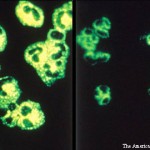
ANCA Mortality: Are Patients Doing Better?
Patients with anti-neutrophil cytoplasmic antibody–associated vasculitides (AAV) have an increased risk of mortality. But treatments have evolved in recent years. Recent research found that between 1999 and 2017 the AAV mortality rate declined by nearly 2% per year in patients 65–74 years old…

Race May Not Be a Risk Factor for Giant Cell Arteritis
Past research has identified being of Northern European descent as a risk factor, among others such as age, sex and HLA DRB1, for developing giant cell arteritis (GCA). But new research casts doubts on this idea, finding that rates of biopsy proven GCA may not differ by race…
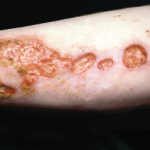
Researchers Seek the Best Methods to Maintain Remission in Vasculitis
MADRID—During the 2019 European Congress of Rheumatology (EULAR), held June 12–15, speakers addressed the complexity of vasculitis in a Challenges in Clinical Practice session titled, How to Maintain Remission in Vasculitis. Although vasculitis appears in many varieties, one commonality exists among these related yet distinct conditions: When there is vital organ or systemic involvement, disease…
Mortality from Anti-neutrophil Cytoplasmic Autoantibody-Associated Vasculitis Falling Slightly
NEW YORK (Reuters Health)—Mortality rates in patients with antineutrophil cytoplasmic autoantibody-associated vasculitis (AAV) decreased from 1999 to 2017, according to records from the Centers for Disease Control and Prevention (CDC). “The mortality attributed to several rare diseases [e.g., hypersensitivity pneumonitis] has increased in recent years,” Alexander W. Steinberg, MD, from Saint Joseph Hospital, Denver, tells…
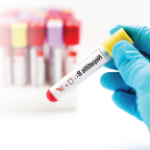
Case Report: Diagnosing, Treating Hepatitis B-Linked Polyarteritis Nodosa
Hepatitis B virus (HBV) associated polyarteritis nodosa (PAN) is an increasingly rare vasculitis in developed countries due to advances in HBV vaccination and antiviral therapy. However, the condition does persist, and rheumatologists should consider it when evaluating vasculitis cases. Below, we discuss a case that illustrates the varied clinical presentations PAN can encompass. A high…
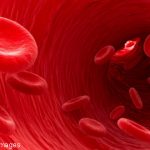
Stay the Course: How to Maintain Remission in Vasculitis
MADRID—During the 2019 European Congress of Rheumatology (EULAR), held June 12–15, speakers addressed the complexity of vasculitis in a Challenges in Clinical Practice session titled, How to Maintain Remission in Vasculitis. Although vasculitis appears in many varieties, one commonality exists among these related yet distinct conditions: When there is vital organ or systemic involvement, disease…
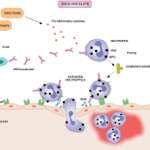
Study Probes Whether Belimumab Can Lower Vasculitis Relapse Rate
In an international clinical trial, adding the drug belimumab to standard maintenance therapy for patients in remission with vasculitis did not lower the relapse rate. The double-blind, placebo-controlled study evaluated the safety and efficacy of belimumab as adjunctive therapy to maintain remission in anti-neutrophil cytoplasmic antibody (ANCA) associated vasculitis (AAV). Results of the multi-center, industry-sponsored…

Thinking Big, Thinking Small
I would like to tell you a story. Two, actually. I am just returning from the 19th International Vasculitis and ANCA Workshop, which is always a fascinating meeting. In its inception, it was a workshop, in the true sense of the word. Now, we discuss anti-neutrophil cytoplasmic antibody (ANCA) testing as casually as we discuss…
- « Previous Page
- 1
- …
- 7
- 8
- 9
- 10
- 11
- …
- 20
- Next Page »